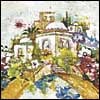“The Place Which G‑d, Your L‑rd, shall choose”
The Rambam refers to the laws governing the construction of the Beis HaMikdash as Hilchos Beis HaBechirah, “the Laws of [G‑d’s] Chosen House.” This expression has its source in the Torah, which refers1 to Jerusalem as “the place which G‑d your L‑rd shall choose.”
There is, however, a problematic dimension to this name for when commenting on a similar phrase, the Sifri states:2 “This refers to Shiloh and [G‑d’s] eternal home [i.e., Jerusalem].” Nevertheless, the term Beis HaBechirah refers only to the Beis HaMikdash and not to the Sanctuary which existed previously inShiloh.
To resolve this difficulty, it is necessary to explain the uniqueness of the Sanctuary of Shiloh, and simultaneously, to distinguish between it and the Beis HaMikdash. As a preface, it is beneficial to quote the history of the indwelling of the Divine Presence as described by the Rambam:3
The Sanctuary which Moshe our teacher built is already described in the Torah. It was, however, only temporary in nature, as it is written:4 “You have not yet reached [the resting place and the inheritance].”
When [the Jewish people] entered Eretz [Yisrael], they erected the Sanctuary in Gilgal for the fourteen years in which they conquered and divided [the land]. Afterwards, they came to Shiloh and built a structure of stone. It did not have a roof, [and instead,] they spread the curtains of the Sanctuary over it.
The Sanctuary of Shiloh stood for 369 years. When Eli died, it was destroyed. They came to Nov and built a Sanctuary there.5 When Shmuel died, it was destroyed, and they came to Givon and built a Sanctuary. From Givon, they came to [G‑d’s] eternal home, [Jerusalem]....
Once the Sanctuary was built in Jerusalem, it became forbidden to build a house for G‑d in any other place.
Sacrificing Only in G‑d’s Chosen Place
The uniqueness of the Sanctuary of Shiloh and the Beis HaMikdash can be appreciated by focusing on the details of the passage where the term “the place which G‑d, your L‑rd, shall choose” is employed. That passage begins describing how the gentiles would worship their gods “on the high mountains, on the hills, and under any luxuriant tree.”6
The passage continues, forbidding the worship of G‑d in such a manner.7 Instead, it states,8 G‑d may only be worshiped in “the place which G‑d, your L‑rd, shall choose,” and explains the nature of the worship which is restricted to that place, bringing “your burnt offerings, your sacrifices..., your designated gifts, and your pledges....”9
From this passage, it is evident that the designation of a place as “chosen by G‑d” is associated with the restriction of offering sacrifices in other locations.
When Sacrificing on a Private Altar was Permitted
Based on the concepts explained above, we can appreciate the following passage from the Mishnah which refers to the different structures mentioned previously:10
When the Sanctuary was constructed [in the desert], [sacrificing on] a private altar was forbidden.... When they came to Gilgal, private altars were permitted.... When they came to Shiloh, the private altars were forbidden.
[In Shiloh,] there was no roof. Instead, there was a house of stone below, and the curtains [from the Sanctuary] above. [This structure] is referred to as “the resting place.”
When they came to Nov and to Givon, the private altars were permitted. [Afterwards,] when they came to Jerusalem, the private altars were forbidden and they were never permitted again. [Jerusalem] is referred to as “the inheritance.”
Although sacrificing on a private altar was forbidden during the time of the Sanctuary, the Sanctuary could not be described as “the place which G‑d shall choose,” for it did not remain in a single place, but rather traveled with the Jews on their journeys through the desert.
Gilgal was obviously a temporary resting place. Therefore, while the Sanctuary was located there, permission to use private altars was granted. This permission was rescinded when the Sanctuary at Shiloh was built, for it was a permanent resting place, “a house.”
When Shiloh was destroyed, the sanctuaries erected subsequently at Nov and Givon did not have the same status. Therefore, the Torah permitted sacrificing at private altars at that time. Once, however, the Beis HaMikdash was built in Jerusalem, an eternal home for the Divine Presence had been established. Consequently, it was, and still is forbidden to sacrifice in other places.
Two Purposes: The Manifestation of the Divine Presence; a Centralized Location for Worship
Although there is a commonalty between the Sanctuary of Shiloh and the Beis HaMikdash, a careful analysis of the passage from the Torah cited previously makes it possible to distinguish between these two structures.
That passage mentions G‑d’s choice of a resting place in two different verses:
“This, [sacrificing offerings,] may you do only in the place that G‑d your L‑rd shall choose... to place His name there.... You shall bring there your burnt offerings....”11
“There will be a place in which G‑d your L‑rd will choose to cause His name to dwell. It is there that you will bring... your burnt offerings....”12
Our Sages13 explain that the first reference applies to Shiloh, while the second reference applies to the Beis HaMikdash. There are two basic differences between these references: The first reference speaks of G‑d choosing “to place His name” in the Sanctuary of Shiloh, while the second reference mentions that Jerusalem will be a place “in which G‑d... will... cause His name to dwell.” Also, in regard to Shiloh, it is said: “You shall bring there,” while in regard to the Beis HaMikdash it is written: “It is there that you will bring.”
The differences between the wording of these references is not merely semantic, but reflects a fundamental variance between the nature of these two structures: Regarding Shiloh, G‑d “chose to place His name there” for a reason — in order that the Jews should have a centralized location for their divine service, as opposed to the gentiles who offered sacrifices “on the high mountains, on the hills...” For this purpose, G‑d caused His presence to be manifest in a particular place.
Jerusalem, by contrast, is a place “in which G‑d... will... cause His name to dwell.” G‑d chose the place as the site in which His presence would be manifest. There was no reason motivating Him, as it were, other than a desire for a dwelling place for His presence. Once His presence was manifest in this site, it became the center of divine service for the Jewish people.
This difference is reflected in the contrast between the phrase “You shall bring there,” which refers to Shiloh, and “It is there that you will bring,” which refers to the Beis HaMikdash. In reference to Shiloh, the emphasis is on “you shall bring,” the need for a centralized location for man’s service. “There,” the designation of a specific location as the resting place for G‑d’s Presence, comes in response, as it were, to that need.
In reference to the Beis HaMikdash, by contrast, the order is reversed. The uniqueness of the site causes it to be designated as the center for Israel’s worship. This is reflected in the phrase: “It is there [i.e., the resting place for G‑d’s Presence] that you will bring....”14
G‑d’s Choice Permeates the Site in its Entirety
Based on the above, we can appreciate the distinction of the Beis HaMikdash as Beis HaBechirah, “[G‑d’s] Chosen House.” Since G‑d’s choice of Mount Moriah was for the sake of the manifestation of His presence, His presence permeated the site entirely, transforming its nature. From that time onward, this mountain became — and has remained — G‑d’s dwelling. Moreover, this choice also affected the nature of the structure built there, and the building, Beis HaMikdash, was itself “chosen” by G‑d15 and suffused with His presence. Indeed, the uniqueness of the choice of Mount Moriah was expressed by the construction of the Beis HaMikdash. This is implied by the Rambam’s statement quoted at the outset: “Once the Sanctuary was built in Jerusalem, it became forbidden to build a house for G‑d in any other place.”
To explain: The site of the Beis HaMikdash was designated as holy from the beginning of creation, as the Rambam mentions in detail in the second chapter of Hilchos Beis HaBechirah.16 It was not until the Beis HaMikdash was built, however, that the uniqueness of this site became manifest to the extent that offering sacrifices in other places was forbidden.
G‑d’s Eternal Home
In the laws quoted above, the Rambam describes the Beis HaMikdash as “[G‑d’s] eternal home.” Although the Beis HaMikdash was destroyed, the Divine Presence has not departed from Mount Moriah.17 Therefore, when Mashiach comes, he will “build the [Beis] HaMikdash on its place.”18 For this is the home of the Divine Presence; “this is My resting place forever.”19
May our study of the uniqueness of the site of the Beis HaMikdash cause that uniqueness to become apparent in the most telling manner with the rebuilding of the Beis HaMikdash. And may this take place in the immediate future.
Adapted from Likkutei Sichos, Vol. XXIV, Parshas Re’eh





Start a Discussion